The following yarn is one I wrote after travelling to the Kimberley for eight days in September last year as a guest of APT. I was employed by The Age at the time and this is the full version submitted. It appeared in a shortened version … yeah, there’s always space restraints … I worked as a sub-editor at the paper so I’ve learnt not to be precious about words. As they (whoever they are) say, something’s gotta give. Importantly, it whetted my appetite for travel within Australia. At the time I had an agreement with The Age to have 12 months off (all my long-service and annual leave and the rest without pay) but the company had to shed 550 jobs after announcing a paltry profit of about $380 million and offered voluntary redundancy. The decision to go was a no-brainer.
I saw Jesus twice in the Kimberley. Once, his image appeared sculpted in a large termite mound; the second time he was a log (with a burnt piece at the top) standing on the side of a dusty red track at the northern end of the Bungle Bungle. Buddha was there too, along with many other things including Chinese pagodas and King Kong. Alas, no Fay Wray.
If you look hard enough in the Kimberley, you can see many things; there are more and varied landscapes than there are hanging in the Louvre; the sculptures, courtesy of Mother Nature, her weathering and the termites, take myriad shapes; and, of course, the sometimes hard-to-find Aboriginal rock art stirs the emotions. It’s hard to know which way to look and why, in what must be one of the world’s largest galleries of art.
The hardest thing to come to grips with, however, was the temperature in Broome. It was eight degrees when I left Melbourne and mid-30s when I reached what seems to be the cheery g'day capital of the world. Even a girl riding a horse on the footpath outside the Cable Reach Club Resort offered a chirpy greeting, not so the horse (it had a long face) or her dog.
The resort was the perfect oasis to acclimatise in a luxury to which I am unaccustomed before hitting the road in a four-wheel-drive at six the next morning, bound for all things Kimberley.
Driving out of Broome, the road is lined with a sea of spear and cane grasses, punctuated by bags of bones masquerading as cattle, often alone (seen but not herded), wattles and gums and, of course, red dust.
Driver/guide Ed, our version of Google for the trip, suggested that we were there at the right time. "The Kimberley is not the ideal place for a shaky relationship coming into the wet season. The late-afternoon cloud build-up and the resultant humidity means everyone gets more than a bit crabby."
Our timing was right. It was my first organised tour and I approached it with some trepidation, but we were 17 disparate people in a comfortable Isuzu 4wd, and we got on famously.
The first sign of life came at the Willare roadhouse, just near the Fitzroy River, where we stocked up on whatever we considered last-minute essentials (a dunny break was high on everyone's agenda). It was a dusty place with a helicopter (a favoured form of transport in these parts) sitting near the fuel bowsers. A quick head count and we were back on the road, but with advice from Ed. "Just yell when you need a toilet break. For the fellas, there's a lavatree every few metres, but please remember ladies, spinifex is definitely not your friend."
So, in a land where ''strewth'' is used without affectation, one of my life's great sightseeing/history lessons began. Here, in no particular order, are some highlights.
THE HARD CELL
The first stop was the infamous prison boab tree, just near Myall's bore, and not too far from Derby. The 1500-year-old tree, now fenced to deter even more idiots carving initials or I love mum into it, is almost 15 metres around and was used in the late-1800s as an overnight holding cell for up to 12 Aboriginal prisoners on their way to trial in Derby.
GORGEOUS GORGES
The first was Windjana Gorge, a breath-taking 3.5-kilometre long area flanked by sheer walls - some supporting vegetation with no apparent foothold - stained spectacularly red, yellow, orange and black by millions of years of weather extremes. The river gives way to sandy expanses, although it runs wildly during the big wet. There was still water enough to sustain healthy fish and freshwater croc populations, the latter idly sunning themselves in the shallows near where we had lunch. Swimming for us wasn't an option despite the searing heat, with the threat of estuarine crocs (salties to the uninitiated) a suitable deterrent.
South of Windjana Gorge is Tunnel Creek, a 750-metre long cave often with knee-deep water in it, and for three years in the late 1800s home to Pigeon, a fugitive Aboriginal wanted for shooting a copper. Wading into the water, armed with just a torch, and knowing that there are freshwater crocs about and waves of bats above, heightens the experience among the stalactites.
It's an easy, very green, very satisfying walk into Bell Gorge. The satisfaction hits new heights when you see the water above the falls and beyond. This was Kimberley wow factor plus one. The fitter among us walked to the foot of the falls while the rest found shelter from the sun and took lunch under a rocky overhang before a swim took the sting out of the day.
It's difficult to describe a gorge as intimate, but in the case of Galvans Gorge, it seems appropriate. Again, the walk in is easy on the feet and the eye, as is the vista of a majestic boab standing watch over the gentle waterfall that keeps the pristine water topped up. Wandjina Aboriginal rock paintings near the water's edge were an emotional cultural bonus. On the walk out, an affable water monitor took time to pose for up close and personal photos.
Swimming at Barnett River Gorge being watched by hundreds of fruit bats gave new meaning to comfort from the heat.
At the King Edward River and surrounds, the landscape took yet another form. The highly polished rocks near the falls were buffed like the finest mahogany. The nearby Aboriginal Wandjina and Gwion rock art galleries stirred wonderful inner emotions as well as they have stood the test of time.
SOME FOR THE ROAD
Unlike the wildlife, which for the duration had stayed mostly out of sight (I saw one dingo and nothing from the coat of arms), four of us walked the historic Gibb River Road (OK, it was a 20-minute stroll back to camp) in the heat of the afternoon. It was a special moment. As was Ed's commentary as we crossed the Napier Range earlier. There's a rock formation called Queen Victoria's head, and it looks just so, although according to Ed: "I reckon you can look into any number of rock formations and nine out of 10 look like Rolf Harris."
HEADING FOR A FALL
Walking to the Mitchell Falls was a challenge (there was an option to take a chopper in) with plenty of up and down bits; it was a three-hour stroll with the temperature well into the 40s, stopping at Little Merten Falls, Big Merten Falls, Aboriginal rock art galleries and various points of floral interest. Swimming above the falls helped, but it became secondary as we were choppered out. Spec-bloody-tacular and then some.
BUNGLE BUNGLE
Rising like a huge string of beehive domes from Purnululu National Park, the Bungles are world heritage listed, but still cop a fearful beating during the wet season. Layers of black lichen and bright orange silica, stripped of its outer protective covering, run in almost straight lines across the range, explained Richie, the guide for this part of the trip, as he led us through the maze of domes into the almost acoustically perfect surrounds of Cathedral Gorge. Cooling our heels in the chilled water at the end of the gorge prepared the feet for a tough (on mostly loose rocks ranging in size from cricket balls to footies) walk into Echidna Chasm at the northern end of the Bungles. The chasm's walls, a palette of oranges and reds, get steeper the further you go in, until they become almost arm's width. Did I say tough? Seven of us drank 27 litres of water on the two walks. The flights with Alligator Air in and out of the Bungles afforded (unfortunately haze and smoke-impeded) views of the enormous Lake Argyle, which holds many times the volume of Sydney Harbour; the not-quite-so-huge Argyle diamond mine and the Carr Boyd Ranges, which have 600 waterfalls on the go during the wet. Oh, and flying over Bow River (a huge bonus for Cold Chisel fans) was spectacular.
THE CAMPS
I stayed at four: Imintji Wilderness Camp, Marunbabidi Wilderness Camp, Ungolan Wilderness Lodge and Bungle Bungle Wilderness Lodge. Each takes the camping experience to a new level, with off-ground tents, comfortable beds with fresh linen and doonas and lighting. Tents at Ungolan (it has just had a $1 million upgrade) and Bungle Bungle have classy en suites. It's difficult to know what impresses most. Is it the company doing everything possible to be environmentally friendly and aware? Is it the friendliness and help from tour guides/drivers and staff at the camps? Is it the comfort factor? Is it the food? Is it that the camps collect ring-pulls from cans (yes, you can take you own canned beer or cask wine) and sends them to the hospital in Broome where they are melted and used in the making of prosthetics? Actually, it's all those things and more. Driver/guide Richie is a great example. After a day explaining the joys of the Bungle Bungle, he headed straight for the kitchen to whip up a sauce for the evening meal. He's a driver/guide, qualified chef, carpenter and, as they say in the Kimberley, a bloody good bloke.
THE FOOD
Each camp varies its menu, but it's always plenty of breakfast options: various cereals, fruit, yoghurt, toast, pancakes, bacon and eggs, tea, coffee, juices and then some. Lunches, always on the road, were substantial salads with cold meat or quiche or wraps, fruit, juice, muesli bar and perhaps cake. Dinners at the camps' central dining areas were always three-course and tasty; usually it was an entree while sitting around the fireplace, followed by steak, pasta, barramundi or chicken plus salads or vegetables or both and desserts. Seconds always seemed an option. A glass or two of wine didn't hurt the cause either.
ON THE MOVE
This trip isn't for the totally faint-hearted. I was away for eight days (one day was R&R in Kununurra, another involved four plane trips). By my reckoning, in six days on the road it involved driving about 1800 kilometres (including 12 hours on the go on day one), one chopper flight, light aircraft from Mitchell Plateau to Kununurra, another from Kununurra to the Bungle Bungle camp and return. Oh, and plenty of the aforementioned foot slogging.
THE VERDICT
There is, I believe, a common factor with everyone who visits the Kimberley for the first time. On the way home, the return trip planning has already started. I know mine has. And as Jesus is out there, then there's every chance Fay Wray is, too.
Pictures are at
http://picasaweb.google.com/kimberleymick/Kimberleys#
http://picasaweb.google.com/kimberleymick/Kimberleys02
http://picasaweb.google.com/kimberleymick/Kimberleys2#
WHO SAID I NEVER WEAR SHORTS

Yeah, OK, it's indulgent showing pictures of myself on the blog. That's me having lunch at Daintree Village. So there.
A BUTTERFLY FLUTTERED BY
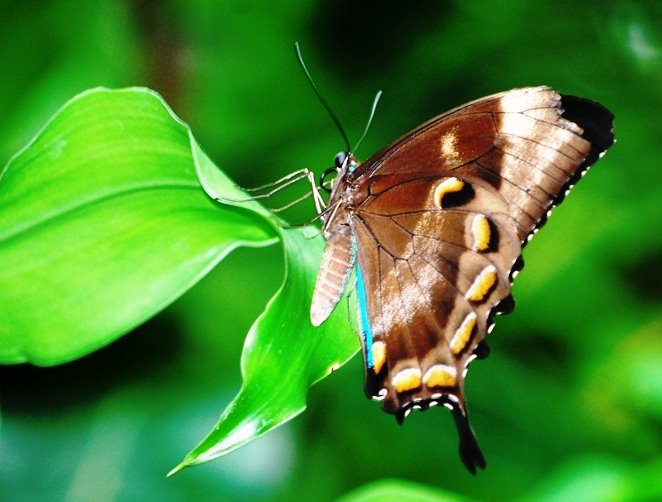
The buggers sit still for two seconds at a time. He's beautiful though,this Ulysses fella.
... AND AGAIN

... AND AGAIN
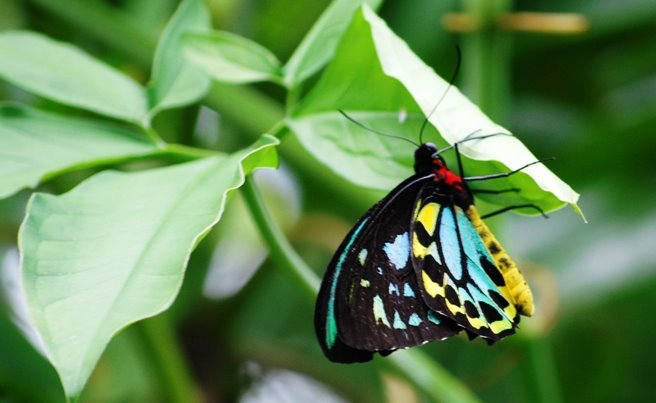
DEVIL'S MARBLES
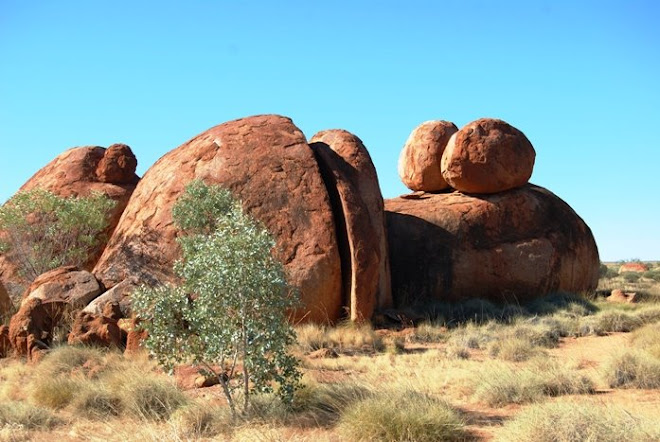
Don't know whether anyone else sees this, but there is something strangely phallic about this picture ... or have I just spent too much time on the road alone.
IS IT A LOG OR IS IT REALLY ...

A Jesus sighting in the Kimberley, just out the back of the Bungle Bungle. Richie, the guide, knew just where to find him.
TAKE IT AS RED
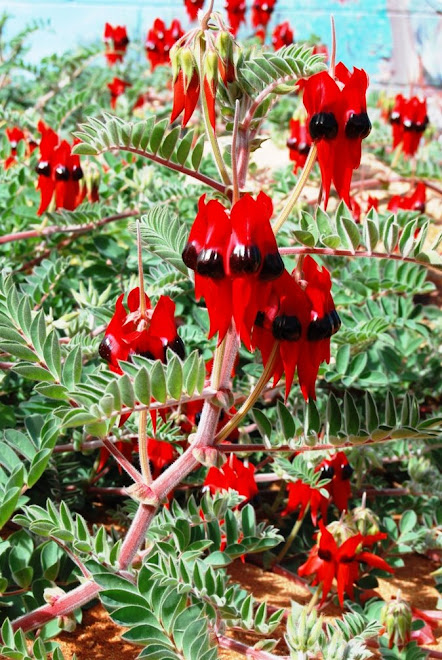
Sturt's desert pea showing off its stuff in Alice Springs.
JAWS, OUTBACK QUEENSLAND-STYLE
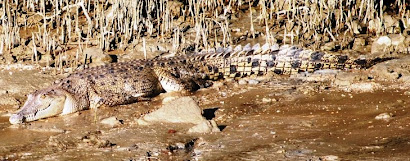
A large salty (they're really esturine and as such fresh water) crocodile near the centre of town in Karumba.
MY KIDS AND THEIR GRANDMA

Joel (left) and Liam during their Christmas visit to their grandma, Mon Senior in December 08.
THE STATE OF THE ART ROCKS

Beautiful Aboriginal rock paintings at Emily's Gap, about 20 kilometres out of Alice Springs.
THE HAND OF A NOODLER
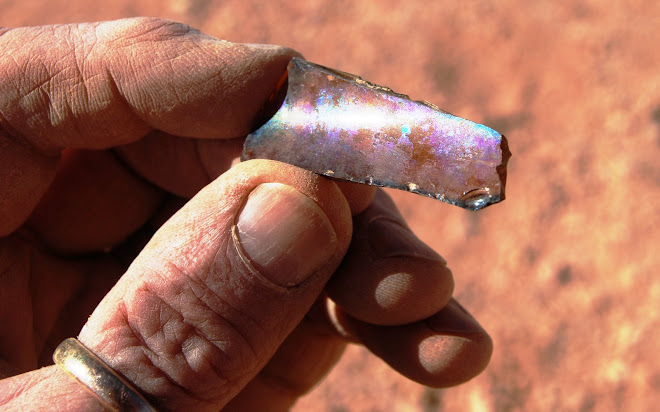
My attempt to leave Coober Pedy a rich man after having discovered a huge source of opal was ... well not successful, that is unless you count a bit of beer bottle. Me and mining? I have always said "make mine a beer".
THE FRENCH CONNECTION

Vincent and me at the lookout on the way to Cape Tribulation. It is disturbing, but he seems to prefer a more up-market blue singlet.
Subscribe to:
Post Comments (Atom)
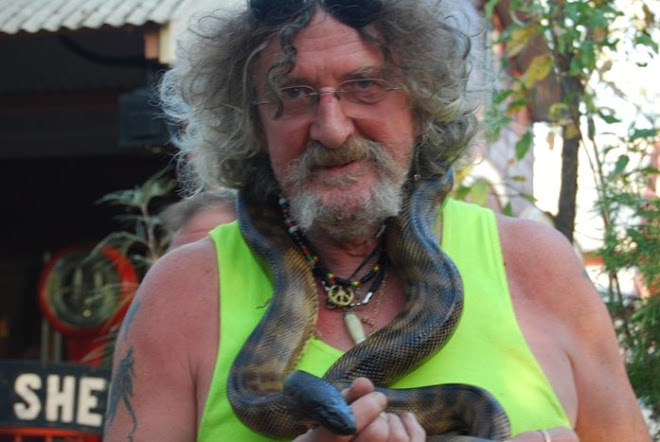
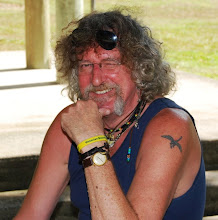





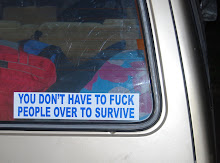
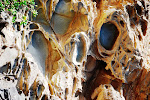

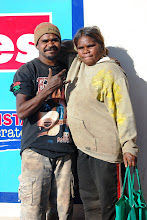
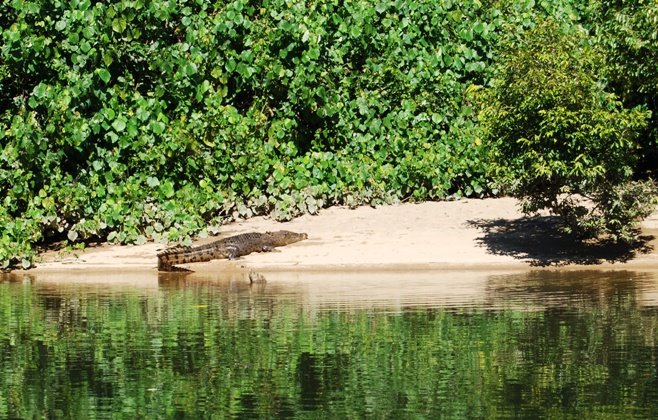
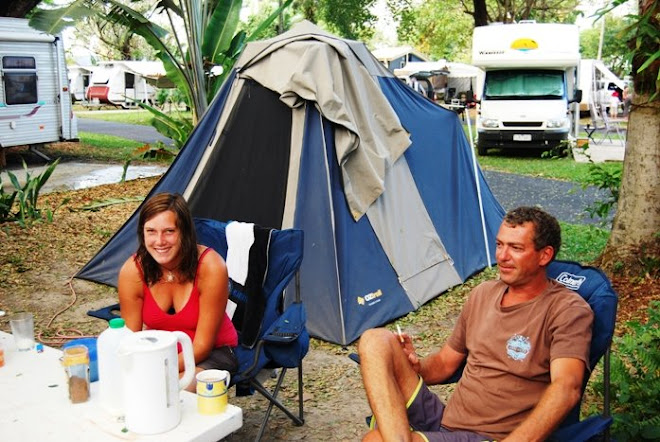
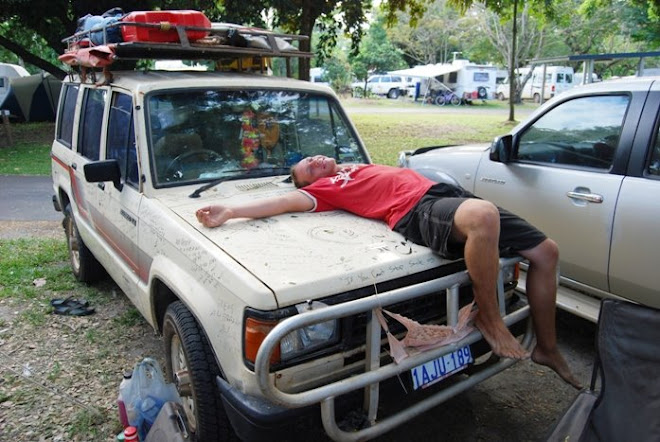
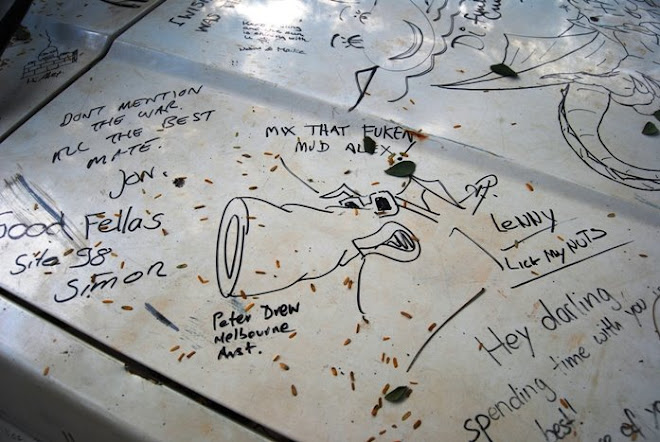








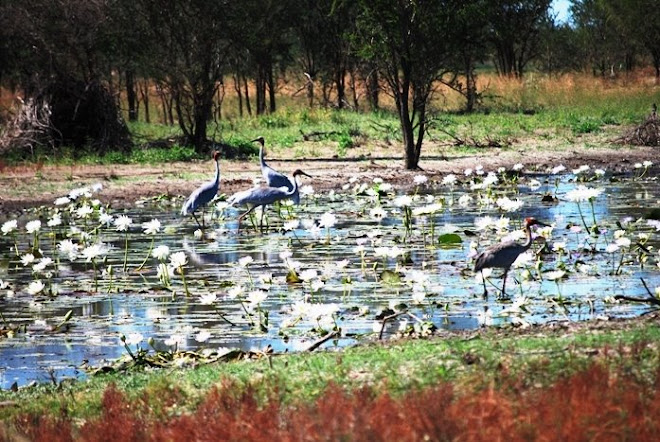
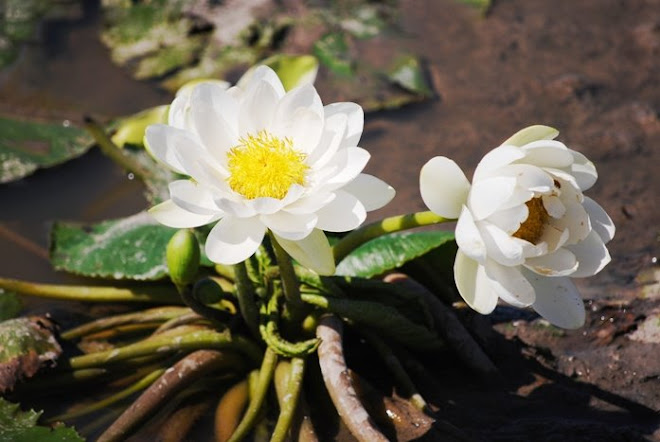

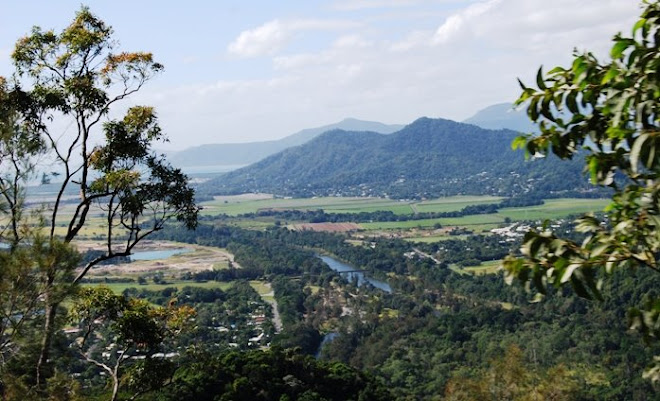

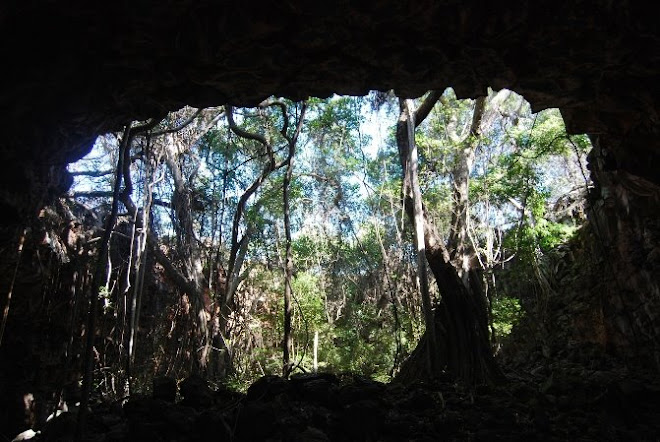
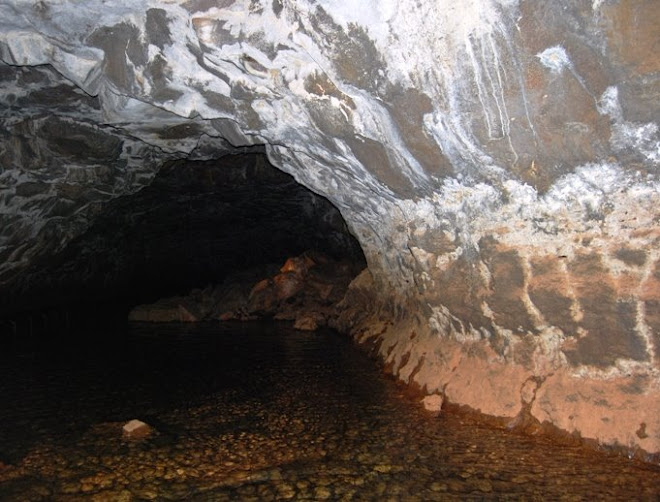
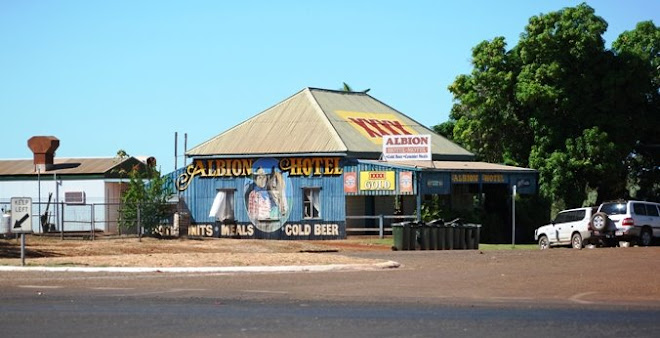


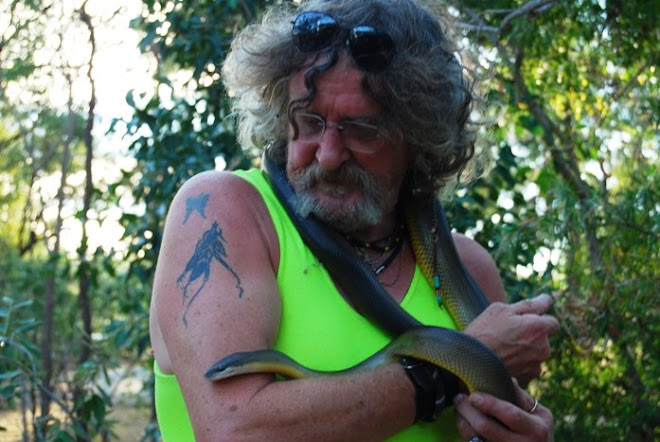



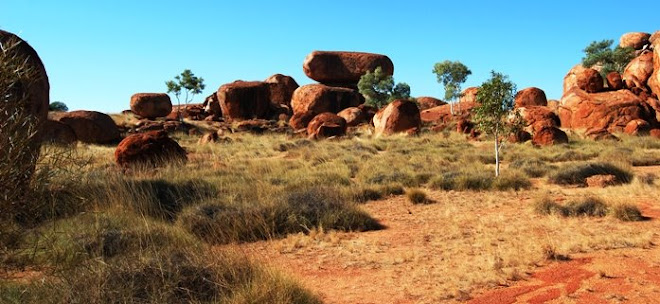
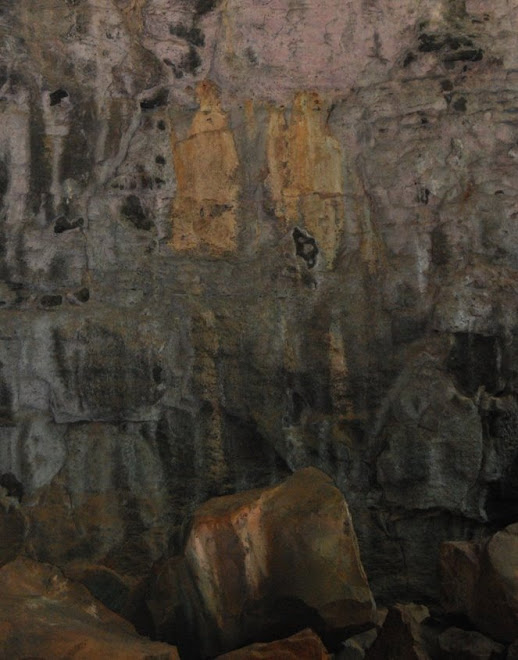

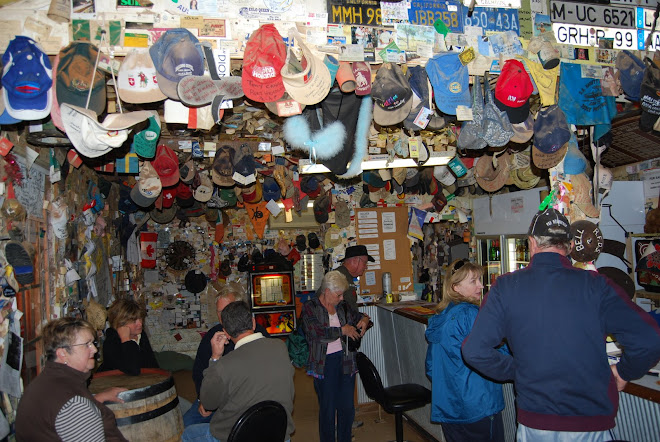



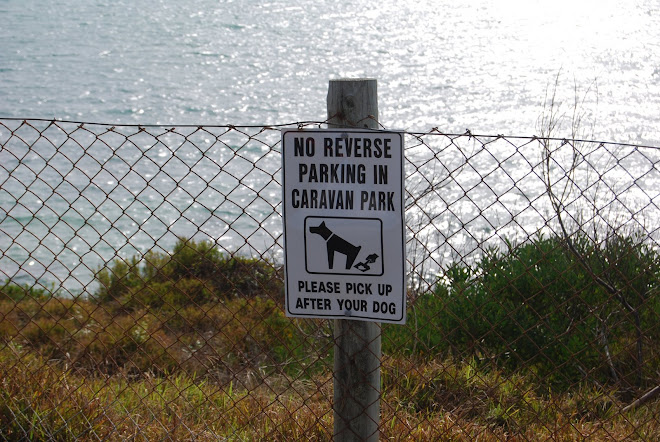


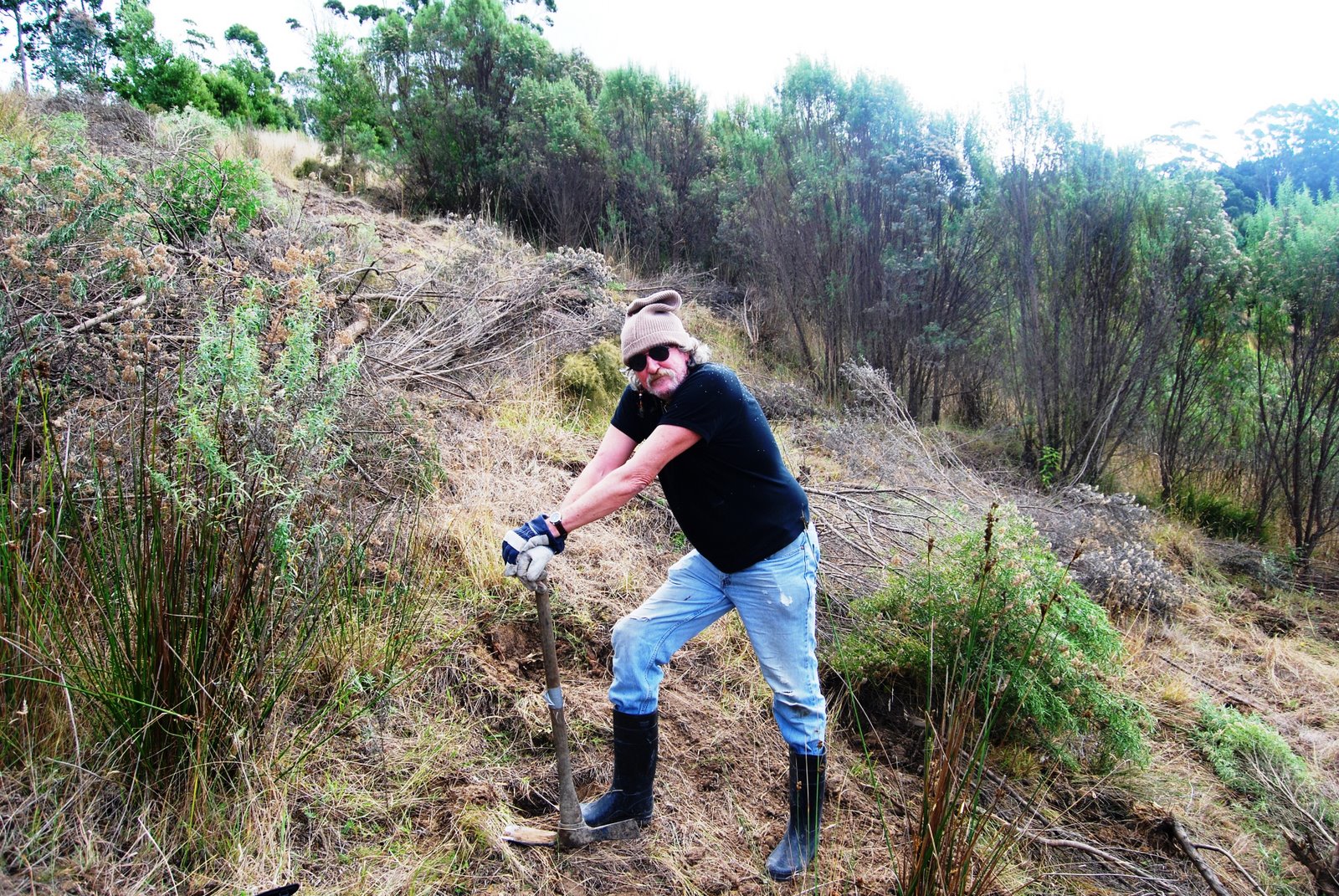



What an adventure, would be so nice to be doing the same thing. One day
ReplyDelete